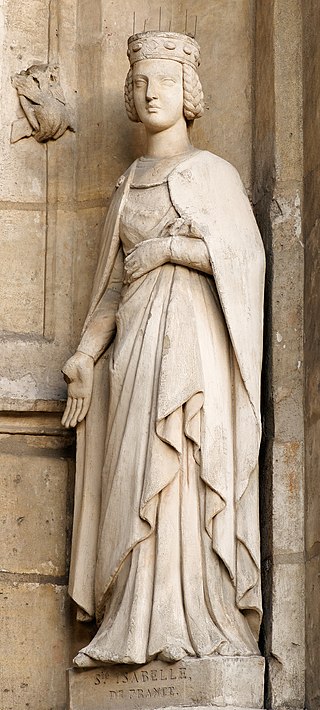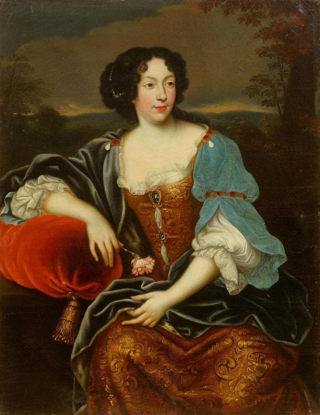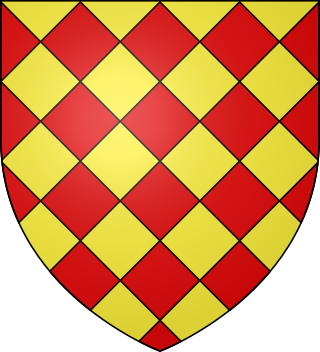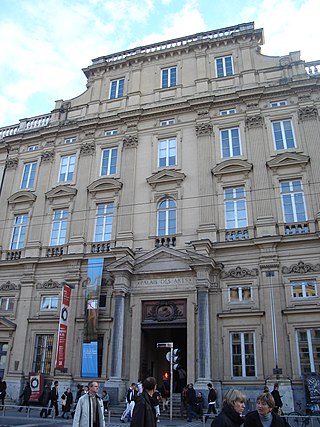
The House of Bourbon is a dynasty that originated in the Kingdom of France as a branch of the Capetian dynasty, the royal House of France. Bourbon kings first ruled France and Navarre in the 16th century. A branch descended from the French Bourbons came to rule Spain in the 18th century and is the current Spanish royal family. Further branches, descended from the Spanish Bourbons, held thrones in Naples, Sicily, and Parma. Today, Spain and Luxembourg have monarchs of the House of Bourbon. The royal Bourbons originated in 1272, when Robert, the youngest son of King Louis IX of France, married the heiress of the lordship of Bourbon. The house continued for three centuries as a cadet branch, serving as nobles under the direct Capetian and Valois kings.

Isabelle of France was a French princess and daughter of Louis VIII of France and Blanche of Castile. She was a younger sister of King Louis IX of France and of Alfonso, Count of Poitiers, and an older sister of King Charles I of Sicily. In 1256, she founded the nunnery of Longchamp in part of the Forest of Rouvray, west of Paris. Isabelle consecrated her virginity and her entire life to God alone. She is honored as a saint by the Franciscan Order. Her feast day is 26 February.
Faremoutiers Abbey was an important Merovingian Benedictine nunnery in the present Seine-et-Marne department of France. It formed an important link between the Merovingian Frankish Empire and the southern Anglo-Saxon kingdoms of Kent and East Anglia.

Chelles Abbey was a Frankish monastery founded around 657/660 during the early medieval period. It was intended initially as a monastery for women; then its reputation for great learning grew, and when men wanted to follow the monastic life, a parallel male community was established, creating a double monastery.
When the Viking chieftain Rollo obtained the territories via the Treaty of Saint-Clair-sur-Epte which would later make up Normandy, he distributed them as estates among his main supporters. Among these lands were the seigneurie of Harcourt, near Brionne, and the county of Pont-Audemer, both of which Rollo granted to Bernard the Dane, ancestor of the lords (seigneurs) of Harcourt. he first to use Harcourt as a name, however, was Anquetil d'Harcourt at the start of the 11th century.

Élisabeth Marguerite d'Orléans, known as Isabelle d'Orléans, was the Duchess of Alençon and, during her husband's lifetime, Duchess of Angoulême. She was first cousin of Louis XIV of France, being daughter of Gaston d'Orléans by his second wife, Marguerite of Lorraine. She has no descendants today. She was suo jure Duchess of Alençon and Angoulême.
Isabelle de Meulan, Dame de Mayenne, Dame de Craon was a French noblewoman, being the daughter of Waleran de Beaumont, 1st Earl of Worcester, Count of Meulan. Isabelle married twice; firstly to Geoffroy, Seigneur de Mayenne, and secondly to Maurice II, Sire de Craon. Her eldest son Juhel III de Mayenne was a celebrated Crusader.

Women letter writers in early modern Europe created lengthy correspondences, where they expressed their intellect and their creativity; in the process, they also left a rich historical legacy.
Agnes d'Harcourt was an author and the abbess of the Abbey of Longchamp.

Amaury III de Craon, Lord of Créon, Mareuil and Sablé, Seneschal of Gascony as well as seneschal of Anjou, Maine and Touraine.

Pentemont Abbey is a set of 18th and 19th-century buildings at the corner of Rue de Grenelle and Rue de Bellechasse in the 7th arrondissement of Paris. The complex had originally been a Cistercian nunnery. The abbey was founded near Beauvais in 1217 and moved to its current site in Paris in 1672 at the behest of King Louis XIV. A reconstruction of the abbey was initiated in 1745 by the Abbess Marie-Catherine Béthisy de Mézières and work was completed in 1783. In the late 18th century, the abbey was one of the most prestigious educational institutions in Paris for daughters of the elite, including two of Thomas Jefferson's. The abbey also provided rooms for ladies of good standing who were in search of rest, including Joséphine de Beauharnais when the case of her separation from her first husband was heard.

The Abbey of Notre Dame aux Nonnains, also called the Royal Abbey of Our Lady of Troyes, was a convent founded before the 7th century in Troyes, France. The non-cloistered canonesses became wealthy and powerful in the Middle Ages. In 1266–68 they defied the pope and used force to delay construction of the collegiate Church of St Urbain. They were excommunicated as a result. Later the abbey adopted a strictly cloistered rule and the nuns became impoverished. Work started on building a new convent in 1778 but was only partially completed before the French Revolution (1789–99). The abbey was closed in 1792 and the church was demolished. The convent became the seat of the prefecture of Aube.
The Abbaye de la Déserte or Abbaye Notre-Dame de la Déserte was a nunnery in Lyon, France. Founded in 1303 by Louis de Villars, Archbishop of Lyon, and Blanche de Chalon, who was also the first abbess, it housed the Poor Clares from 1304 till 1503, and then Benedictine nuns from 1503 to the French Revolution, when it was dissolved. It was demolished in 1814.

The abbey of Saint-Ausone is a Benedictine abbey founded in Angouleme in the Charente in the 11th century.

Henri IV de Sully, Grand Butler of France, Treasurer of France, Lord of Sully was a 13th-14th century French noble.

Montivilliers Abbey is a former Benedictine nunnery, founded between 682 and 684 by Saint Philibert in the town of Montivilliers in Normandy, in the present department of Seine-Maritime, France. It was suppressed during the French Revolution, but many buildings, including the church, have survived.

The Abbey of Saint-Pierre-les-Nonnains in Lyon, also known as the Abbey of the Dames de Saint-Pierre or simply Palais Saint-Pierre, is an ancient Catholic religious edifice that housed Benedictine nuns from the 10th century onwards, and was rebuilt in the 17th century. Closed during the French Revolution, the former abbey is now home to the Musée des Beaux-Arts de Lyon.














